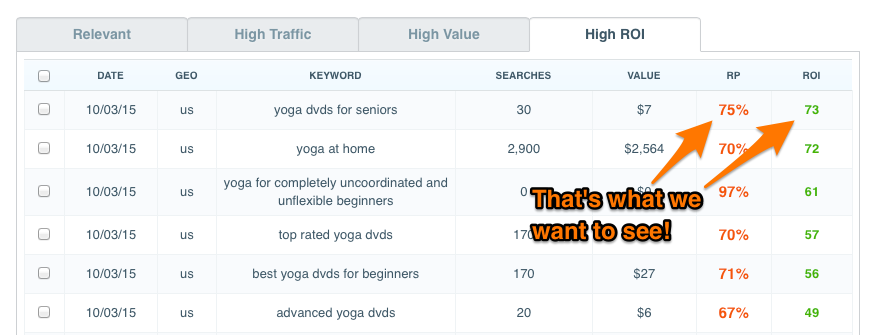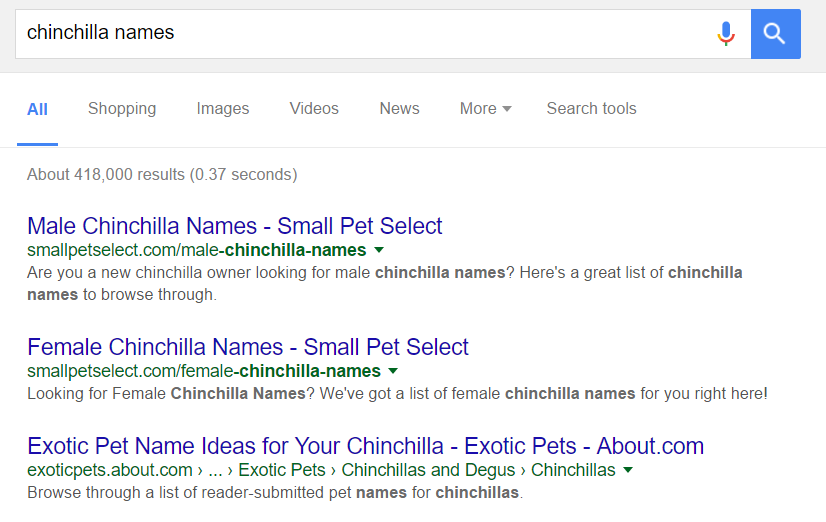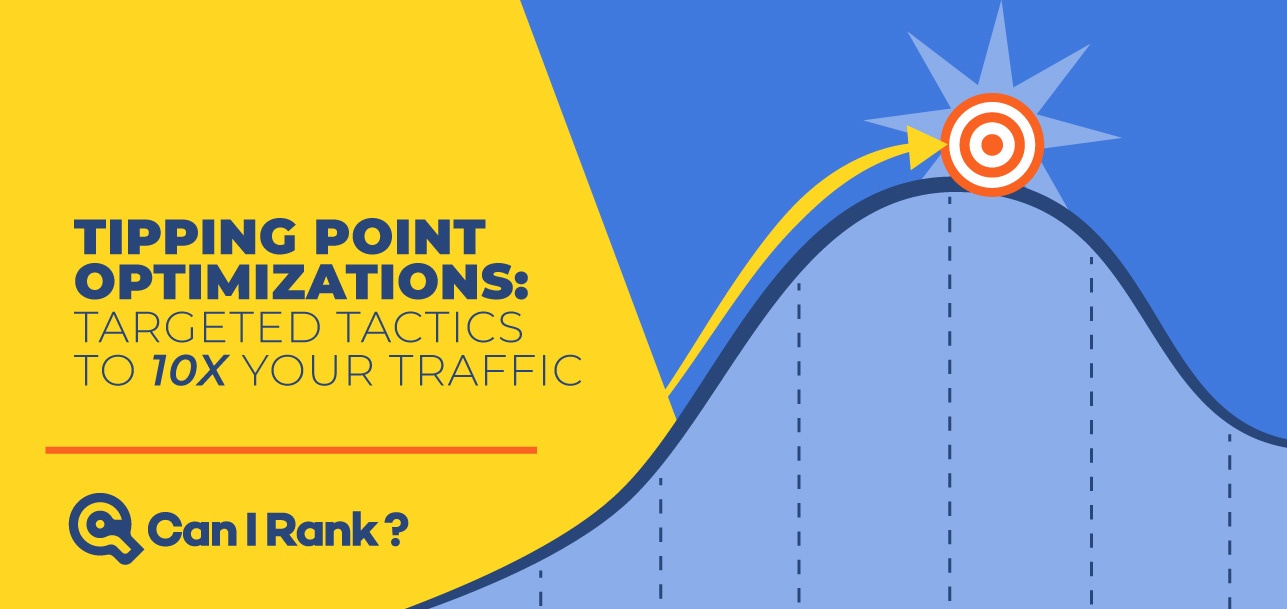Many businesses and marketers liken SEO to a game, which is only somewhat appropriate when you really think about it.
Sure, there are rules. Lots of rules. Strategy, too. Cheaters get punished and the best players theoretically rise through the rankings and cling for dear life for their place at the top.
And yeah, there’s fierce competition as millions of players fight tooth and nail for the ultimate prize: the coveted top spot in the SERPs.
Is SEO a game? Sort of.
But here’s the thing: SEO is not a guessing game.
Ranking for keywords is not gambling.
SEO is not your site rolling snake-eyes with your keyword strategy and Google throwing you face-first onto the sidewalk, flat broke.
Listen: ranking for keywords isn’t a game you play against the house: it’s a game you play against others.
It may sometimes feel as if Google is “rigging” the playing field when it comes to what we’re supposed to do with our content and keywords. However, search engines have been historically transparent in terms of what they expect from our sites. From natural keyword placement to relevant, original content, Google’s aim is to provide the best user experience possible from site to site. After all, the motto of “Don’t be evil” should be a good indicator of how Google’s company philosophy aligns with their search objectives.
In a sense, SEO is fairly straightforward in terms of what we’re supposed to do on-site: it’s our competitors that complicate the situation.

The Odds of Outplaying (and Outranking) the Competition
For starters, there are over 200 factors that Google’s algorithm considers to determine how well sites rank. Many of these factors, such as domain age and the quality of incoming links, are ultimately out of your control; likewise, trying to wrangle each and every one of these factors is enough to make your head spin.
Therefore, it’s more prudent for businesses to instead focus on factors that they can control, including:
- Choosing low-competition keywords that they can realistically rank for
- Placement of those keywords within their on-site content (including anchor text, title tags, alt-tags and so on)
- Encouraging organic link-building by crafting sharable, accessible content; likewise, providing incentive for readers to click through and stick around the page rather than bounce
- Creating in depth, long content that covers a topic completely (match your content length to the depth of the subject)
While 200 variables may be a lot to swallow, think of it this way: the responsibility to rank falls on your shoulders rather than the shoulders of Google or competing sites in your space. With the right mentality, SEO strategy and tools at your disposal, it’s more than possible to, over time, outrank your competitors and steal their traffic.
Meanwhile, your competition likely has a similar mindset in terms what they can do to outrank you.
Therefore, you’re going to need to work smarter (not harder) when it comes to driving traffic to your site.
How?
Betting on the Long-tail
Time and time again, long-tail keywords are stressed as the ideal starting point for small businesses looking to break into the SERPs. It is so well known that it is the starting advice of every ecommerce SEO expert. Such keywords have relatively low search volume and competition; meanwhile, long-tail keywords represent highly targeted traffic with specific intentions in terms of search.
For example, let’s say you run a site in the fitness niche: you sell specialized home workout routines and women are your target audience. The phrase “dumbbell workout” gets approximately 40,000 searchers per month and would therefore be completely unrealistic for a new site to rank for. However, honing your keyword down to something more specific yields less competition. For example:
“dumbbell workout” (40,500 monthly searches)
“dumbbell workout routine” (3,600 monthly searches)
“dumbbell workout routine for women” (50 monthly searches)
Sure, low-competition also means relatively low traffic; however, the intent of laser-targeted traffic means that such visitors are much more likely to stick around your site, which Google interprets as a positive search signal. Finding these long tails is the best way to steal traffic from your competition.
While targeting long-tail keywords sounds foolproof on paper, finding ideas and inspiration for such keywords is easier said than done. How so?
As long-tail keywords represent a longer string of terms (more than three), there’s much more room for variation regarding keyword phrases. This can become incredibly overwhelming as you quickly find yourself swimming in a sea of keywords, unsure what to target first. Using the aforementioned example, how do we know whether to target dumbbell “routine” versus “plan” versus “exercises” without having to plug away at Google’s Keyword Planner? How do we know which of those phrases we should target?
The critical pieces of information here are: a list of long-tail keywords, their search volumes, the values of the keyword — or how much you’d save in advertising if you paid the going CPC rate for the same term (CPC x search volume), and perhaps most importantly, your ranking probability.
There are a number of tools beyond the highly flawed Google Keyword Planner that can provide you with long-tail keyword ideas, search volumes, and CPC (so that you can calculate the keywords’ value). And while some of those tools will provide a keyword difficulty score and leave it up to you to determine whether or not your site can compete for a given keyword difficulty, CanIRank is the only tool that will also provide you with a highly accurate Ranking Probability score, which assesses keyword difficulty relative to your specific website.
Targeting long-tail keywords is a sound strategy for sites looking to break into the SERPs; however, there’s more to ranking than just sticking keywords on your site.
If you put all of your proverbial chips on the long-tail, chances are you’re missing other opportunities to rank which are achievable based on the scope of your site.
How to the Stack the Deck Against Your Competitors
Again, outranking your competition comes down to strategy. Through smart SEO research tools such as CanIRank, you can find the exact terms, long-tail or otherwise, that you can realistically rank for.
For example, CanIRank customer Small Pet Select made it onto the first page of Google for “chinchilla names” (which is not a long-tail term) by unlocking a keyword phrase that wasn’t being targeted by their competitors. Meanwhile, Small Pet Select ticked all of the right boxes in regard to what their site needed to rank.
So, how were they able to rank despite facing competition from seemingly “bigger” sites?
Remember those 200 ranking factors I mentioned about earlier?
Yeah, those definitely matter.
Taking such factors into consideration, CanIRank has the ability to compile your site’s ability to rank versus competitors to help further hone your strategy to chip away at keywords that nobody else in your space has yet to target. For example, take a look at the following heat map:
Small Pet Select had a distinct competitive advantage over sites in their space, despite not having the highest scores in every category. Although they didn’t have the highest Website Strength (a score of 45 versus competitors with scores of 83 and 76), their Page Strength (at 84) absolutely toppled any competing pages for the term.
In short, ranking is a relative game. That is, your site and pages don’t have to be perfect. They just have to be better than what your competitors are doing. By analyzing the factors noted in the heat map, you can see that ranking for keywords doesn’t solely rely on choosing a low-competition keyword.
Here are some quick and actionable examples of how you can improve your own scores for the following ranking factors:
Page Relevancy – Google constantly stresses the need for “relevant content;” for example, do you have a specific page dedicated to the keyword that you’re fighting for? Are you ensuring that your keyword appears in the titles, h1 and alt-tags, too (just to name a few)?
Website Relevancy – By targeting similar keywords and variations throughout your site (“chinchilla names” and “guinea pig names,” for example), it becomes apparent to Google that your site is centered around a theme versus random, unrelated topics, as they can see a larger amount of thematic content throughout your site.
External Page and Website Relevancy – While external links are often out of our control, they’re incredibly important to your SEO efforts. The more that other sites link to you for your keywords, the better.
Page and Website Strength – In order to get the attention of high-quality sites, you’re going to need to create highly-targeted, relevant content that’s worth sharing.
Think of SEO as playing the “long-game.” While you won’t outrank your competitors overnight, you can take steps today to strengthen your site from the ground-up.
Don’t Gamble With Your Keyword Strategy
The concepts of keywords and SEO are often misunderstood by newbies looking to wrap their heads around Google’s algorithm. To be fair, it’s pretty easy to get twisted.
But you can’t just slap something on your site and hope for the best. In other words, your site isn’t going to hit the jackpot overnight without some serious strategizing.
Again, SEO doesn’t have to be a guessing game. The writing is on the wall in terms of what search engines want from or sites: likewise, from creating content to building links, the actions necessary to rise in the SERPs are achievable for sites willing to put in the legwork.
Rather than gambling on keywords that you think you could potentially rank for, consider how tools such as CanIRank can help you uncover realistic ranking opportunities and help you create content to actually make it happen.







Leave A Comment